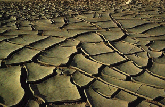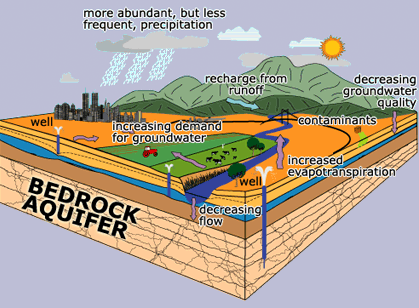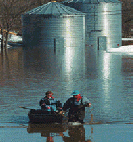Proactive disclosure
Print version   |  | 
Natural Resources Canada > Earth Sciences Sector > Priorities > Climate Change Impacts and Adaptation > Climate Change in Canada
A change in the wind: Climate Change in Québec Could a warmer climate mean a shortage of water ?
Water resources are essential to our society and our economy. They are of paramount importance to our natural ecosystems.

Desiccation cracks produced by drought
(UNESCO) |
Projected climate change could alter snow and rainfall patterns, resulting in less frequent, but heavier, precipitation. Intense, heavy rainfall leads to significant runoff and therefore does less to recharge groundwater than a long-lasting, steady rainfall because the ground can only absorb a certain amount of water in a short period of time.
Did you know?
Relatively modest changes in temperature and precipitation can have a marked effect on the volume and duration of spring runoff, as well as the intensity of flooding and drought.

The hydrological cycle and climate warning
Warning! Groundwater is a finite resource and must be recharged!
(adapted from the Quebec Geoscience Centre) |

Summer thunderstorm
(NOAA) |
One serious impact of climate change may be droughts, resulting in decreased surface-water levels and flows, and diminished groundwater quantity and quality, which could lead to less water available for consumption, agriculture, and recreation and more conflicts over use.
In addition, storm sewers and sanitary systems may not be able to deal with more frequent, high-intensity rainfall and storms.

Flooding after a heavy rainfall
(Environment Canada) |
Groundwater generally moves from higher to lower elevations. It feeds rivers and lakes and maintains flow when precipitation is light. Because it is cold, groundwater keeps rivers from becoming too hot for fish such as trout and salmon. If groundwater supplies dwindle, the health of rivers and the aquatic life they sustain will be threatened.
|
